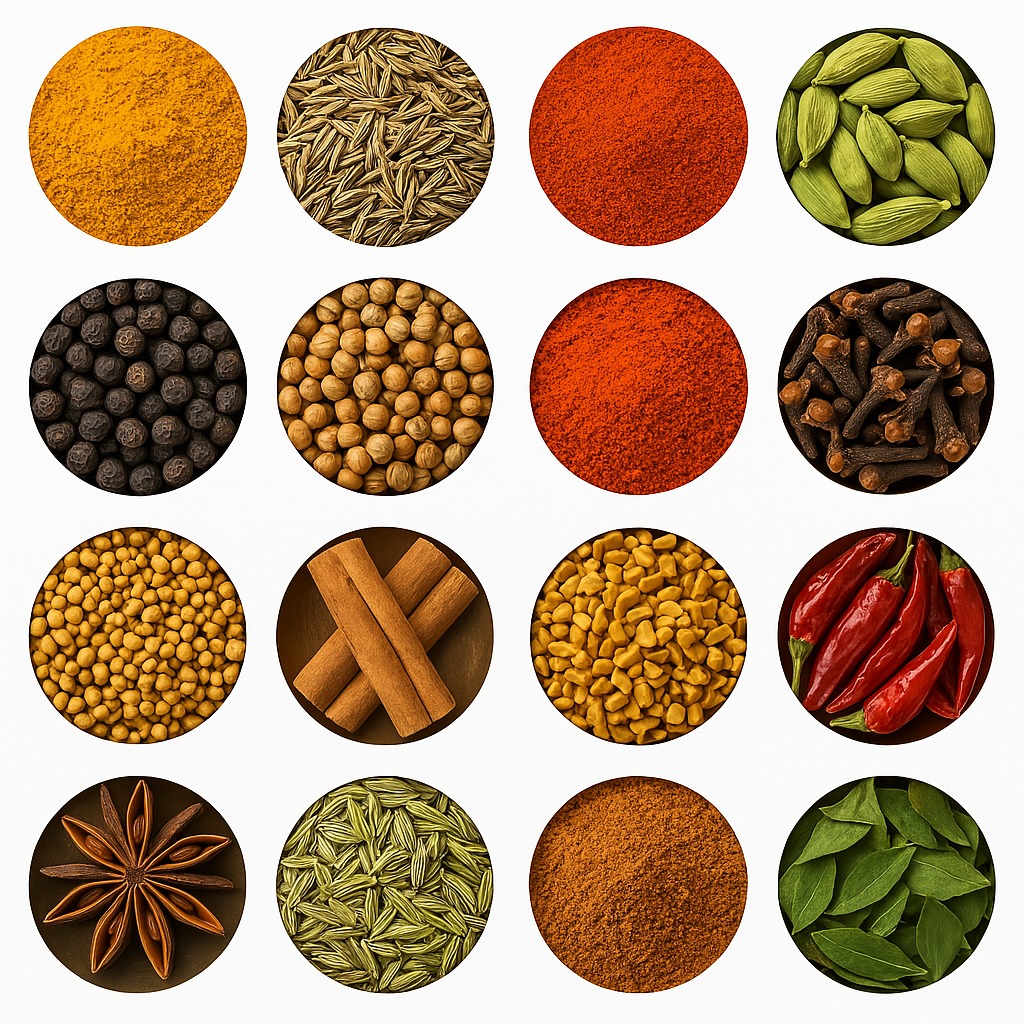Indian spices have captivated the world for centuries with their rich aromas, bold flavors, and profound cultural significance. From ancient trade routes to modern kitchens, these vibrant seasonings symbolize not only the essence of Indian cooking but also the diversity and depth of global culinary traditions.
A Heritage of Flavor and Healing
India is often referred to as the “Land of Spices,” and for good reason. For thousands of years, Indian spices have played a central role in food, medicine, and rituals. Ancient Ayurvedic texts speak of spices not just as ingredients but as powerful tools for healing and balance. Turmeric, cumin, coriander, cardamom, cloves, and many others are still used today in both cooking and holistic wellness practices.
The Spice Trade: India’s Global Legacy
India’s relationship with spices helped shape global history. Its fragrant bounty drew traders and explorers from distant lands—Arab merchants, European voyagers, and colonial empires—all seeking access to this treasure trove of flavor. Ports like Kochi and Calicut flourished as spice trade centers, turning India into a hub of cultural and culinary exchange.
Health Benefits Rooted in Tradition
Indian spices are celebrated not just for their taste but for their health-boosting properties. For instance:
- Turmeric is renowned for its anti-inflammatory and antioxidant effects.
- Cardamom aids digestion and freshens breath.
- Cloves have antiseptic properties and help relieve toothaches.
- Cumin supports metabolism and boosts immunity.
These ingredients are more than seasonings—they're natural wellness allies, endorsed by both ancient wisdom and modern science.
A Culinary Symphony
What makes Indian spices truly exceptional is their ability to transform a simple dish into an explosion of flavor. Whether it's the smoky aroma of roasted cumin, the sweetness of cinnamon, or the warmth of garam masala, each spice adds a unique layer to the culinary experience. Together, they create a harmony that’s unmistakably Indian and irresistibly global.
Beyond the Plate
Spices in India are not limited to kitchens. They're woven into the fabric of life—from festive rituals and religious ceremonies to traditional dyes and perfumes. Saffron symbolizes purity, turmeric is used in sacred rites, and sandalwood’s fragrance carries spiritual significance.
Conclusion
Indian spices are far more than ingredients—they are storytellers of history, culture, health, and heritage. Their rich colors, bold flavors, and therapeutic properties have earned them a timeless place in homes around the world. Whether you’re spicing up a curry, brewing masala chai, or exploring natural wellness, Indian spices continue to enrich lives across generations and continents.


